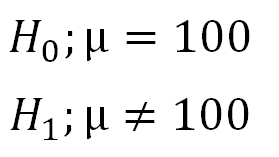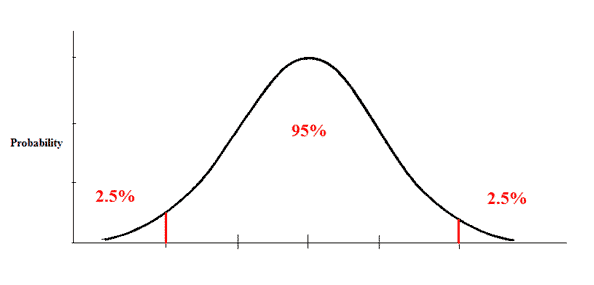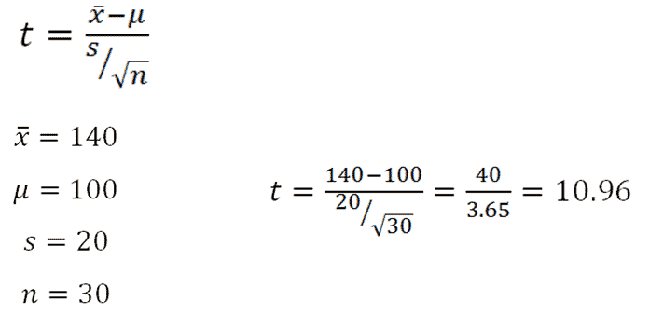Let's perform a one sample t-test: In the population, the average IQ is 100. A team of scientists wants to test a new medication to see if it has either a positive or negative effect on intelligence, or no effect at all. A sample of 30 participants who have taken the medication has a mean of 140 with a standard deviation of 20. Did the medication affect intelligence? Use alpha = 0.05.
| Steps for One-Sample t-Test |
|---|
|
1. Define Null and Alternative Hypotheses 2. State Alpha 3. Calculate Degrees of Freedom 4. State Decision Rule 5. Calculate Test Statistic 6. State Results 7. State Conclusion |
Let's begin.
1. Define Null and Alternative Hypotheses

|
Figure 1. |
|---|
2. State Alpha
Alpha = 0.05
3. Calculate Degrees of Freedom
df = n - 1 = 30 - 1 = 29
4. State Decision Rule
Using an alpha of 0.05 with a two-tailed test with 29 degrees of freedom, we would expect our distribution to look something like this:

|
Figure 2. |
|---|
Use the t-table to look up a two-tailed test with 29 degrees of freedom and an alpha of 0.05. We find a critical value of 2.0452. Thus, our decision rule for this two-tailed test is:
If t is less than -2.0452, or greater than 2.0452, reject the null hypothesis.
5. Calculate Test Statistic

|
Figure 3. |
|---|
6. State Results
t = 10.96
Result: Reject the null hypothesis.
7. State Conclusion
Medication significantly affected intelligence, t = 10.96, p < 0.05.